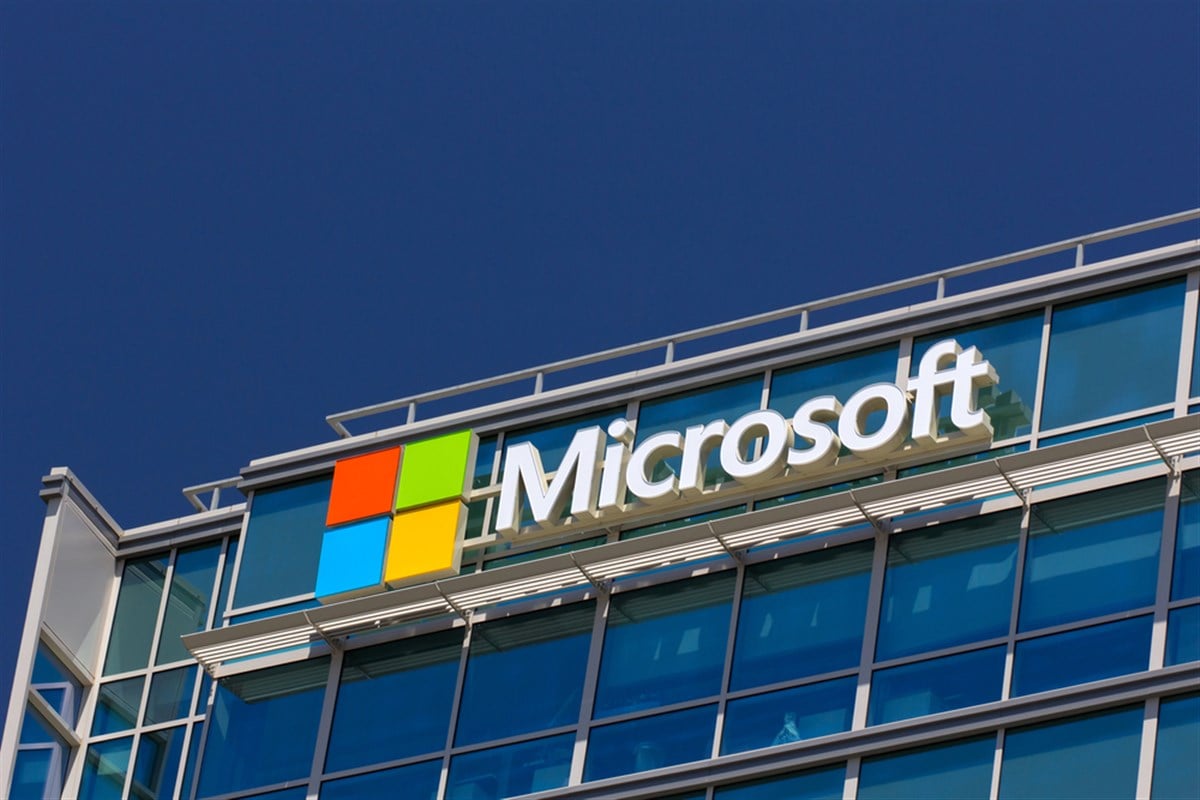
Microsoft Corp (NASDAQ: MSFT) began 2024 as the world’s only $3 trillion company thanks to a significant stock price jump during the recent AI-infused bull run. Now approaching its 50th anniversary, Microsoft is still one of the market’s most important stocks, and countless businesses and individuals depend on the company’s products.
But with the artificial intelligence boom looking tired and inflation proving to be stickier than previously anticipated, is Microsoft still a stock worth owning in 2024? In this article, we’ll perform some Microsoft stock analysis, review the company’s recent stock performance and see what lies ahead for the tremendous tech titan.
Understanding Microsoft's Market Position
|
Microsoft Market Position |
|
|
Market Capitalization |
$2.98 trillion |
|
Average Daily Volume |
22.96 million shares |
|
Annual Sales |
$227.58 billion |
|
NASDAQ 100 Weight |
1st |
Microsoft isn’t just one of the most dominant tech stocks - it's THE dominant stock in a market that’s become increasingly tech-heavy from a market cap standpoint. Famously formed in a Washington garage by Bill Gates and Paul Allen in 1975, Microsoft rose to prominence through its robust operating systems, first with MS-DOS and then Windows, which still holds a significant share of the market today.
Gates was succeeded as CEO by Steve Ballmer in 2000, who was followed by current CEO Satya Nadella in 2014. Under Nadella’s watch, Microsoft has driven itself to the forefront of several industries beyond software and computers, such as artificial intelligence, cloud computing, and gaming. In January 2024, Microsoft surpassed Apple Inc. (NASDAQ: AAPL) as the largest publicly traded company in the world by market cap, which currently sits at $2.98 trillion as of today.
Microsoft is the largest holding in many prominent ETFs, both in the tech sector and the broader market. The tech-laden NASDAQ 100 ETF Invesco QQQ (NASDAQ: QQQ) has Microsoft as its top holding at 8.9%, followed by Apple at 7.74% and NVIDIA Inc (NASDAQ: NVDA) at 6.26%. Microsoft is also the most significant component of the SPDR S&P 500 ETF Trust (NYSE: SPY) and the Vanguard Total Stock Market Index Fund ETF (NYSE: VTI).
Key Financial Metrics Review
[content-module:CompanyOverview|NASDAQ: MSFT]When stocks were floundering in early 2023, Microsoft kicked off the bull market rally with big earnings beats in Q2, Q3 and Q4. The company has beaten analysts’ top and bottom-line earning estimates for 4 consecutive quarters. It shows few signs of slowing down even as the broader market takes a breather following 5 months of non-stop gains. Here are some critical Microsoft financial metrics to consider in your analysis:
- Revenue - Microsoft posted just under $212 billion in revenue for the full year 2023, up almost 7% from 2022 and nearly 40% over the last 5 years. On a quarterly basis, Microsoft saw $62 billion in revenue for Q4 2023, up 9% from Q3 2023 and 15% from Q4 2022.
- Profit Margins - Measuring margins helps show how much a company pays for each dollar of revenue. Profit margin is the percentage of revenue that remains after costs and operating expenses are accounted for. Since the start of the COVID-19 pandemic in Q1 2020, Microsoft’s profit margins have hovered between 31% and 38%, most recently coming in at 36.27% for Q4 2023. Microsoft has done well in keeping its margins high compared to its biggest competitor, Apple, which has routinely posted quarterly profit margins between 21% and 26% over the last decade.
- Earnings Per Share (EPS) - Microsoft has been an earnings-beating machine in the last few years, with only one quarterly top and bottom miss (Q4 2022) during the previous 5 years. In their most recent report for Q4 2023, Microsoft notched $2.93 in EPS, a 33% quarterly increase year-over-year. Microsoft’s EPS figure over the last 12 months was $11.05 in EPS, marking more than 22% growth year-over-year.
Recent Developments Affecting Microsoft Stock
Recent Microsoft stock trends have been positive, especially on the artificial intelligence front. AI has been the big investment theme of this current bull market, and Microsoft is well-positioned to remain an AI leader for years to come. The company has invested more than $13 billion in OpenAI, the groundbreaking tech firm behind the generative AI bot ChatGPT. Microsoft has also added Open AI executives Sam Altman and Greg Brockman to its ranks to further the development of its own AI systems like Azure.
Additionally, Microsoft has invested in ‘smaller’ AI systems called Phi-3, which aim to run on reduced processing power and don’t need chips from increasingly viable competitors like NVIDIA. These smaller systems can work on smartphone operating systems and while they aren’t as powerful as ChatGPT-4 or other similar systems, they will be more affordable to clients.
AI isn’t the only tech feature driving Microsoft forward. Since the introduction of the first Xbox in 2001, Microsoft has established itself as a major player in the gaming industry both with its variety of home consoles and mobile/PC games. Last year, the company closed a deal to acquire Activision Blizzard for $75 billion, which made Microsoft the third-largest video game published on the planet. Some of Microsoft’s most successful game titles include the Minecraft, Halo and Call of Duty franchises. By focusing on accessible content and multiple platforms, Microsoft’s goal is to reach the broadest possible audience for its gaming products.
Microsoft Stock Performance Analysis
Microsoft went public in 1986 with a share price of $21 and has since performed 9 stock splits, most recently in 2003. Before the Dot Com bubble burst, Microsoft was one of the market’s prized stocks, soaring to an all-time high of $58 by December 1999 ($175 unadjusted for splits).
But like many of its tech brethren, Microsoft experienced a lost decade following the bursting of the bubble. By March 2001, the market had cut MSFT shares in half from their 1999 peak and failed to generate much momentum for the next 7 years. Rock bottom occurred in March 2009, when the stock dropped to just under $16 per share.
Considering recent Microsoft stock trends, it's hard to imagine, but shares failed to make a new all-time for nearly 17 years following the Dot Com Bubble. In October 2016, Microsoft’s stock finally closed above $58 per share and has been one of the S&P 500’s best performers since, gaining more than 610%.
Over the last year, MSFT shares have been a market leader, significantly outperforming the S&P 500. The chart above shows Microsoft has risen 44.5% over the previous 12 months, compared to 22.5% for SPY, the S&P 500 index fund. In the last five years, the difference is even more stark—a 232% gain for MSFT versus a 72% gain for SPY.
Recently, Microsoft has drifted below its 50-day moving average following a 5% decline from its most recent all-time high. However, the overall trend still looks to be upward as the stock price is comfortably above the 200-day moving average, and the Relative Strength Index (RSI) shows a figure just above the oversold level. Traders looking for Microsoft stock predictions should keep a close eye on current volume, which is still suppressed compared to the stock’s 90-day average trading volume.
Investor Sentiment and Market Reactions
Microsoft investor sentiment remains bullish despite the recent pullback in the tech sector. Earnings growth is projected to expand by more than 13% in the next fiscal year, and 35 of 38 analysts covering the stock currently list a Buy rating (2 rank it a hold and 1 a sell). The consensus price target is $434, representing a 6.5% upside over the current market price. At this time last year, the stock had 26 buy ratings, 5 holds and 1 sell with a consensus price target of $289.
Institutions have been net sellers of Microsoft shares over the last 12 months. Over $128 billion of institutional money has exited MSFT positions in the last year, compared to inflows of $98 billion. Over 71% of Microsoft shares are currently owned by institutions, with the largest holders being Vanguard Group and State Street.
Future Predictions for Microsoft Stock
Investors are always seeking certainty in an uncertain world. While no one can predict the future, Microsoft has several different tailwinds affecting it in 2024 and should be well-poised to continue making gains throughout the year. The company has high-profit margins and ever-expanding revenue sources, plus its position in the AI universe is the envy of many other major tech competitors.
However, the investment world is still a bit on edge despite big gains to start 2024. Wars in Ukraine and the Middle East continue to put pressure on commodities, and inflation in the United States has remained remarkably stubborn, with CPI still over 3%. Rate cut expectations also continue to dwindle, which could keep capital costs high in the foreseeable future. However, these factors affect companies of all shapes and sizes and Microsoft is uniquely situated to stave off macro headwinds. Always perform due diligence and check with an advisor before making a big investment, even with a company that looks as promising as Microsoft.




